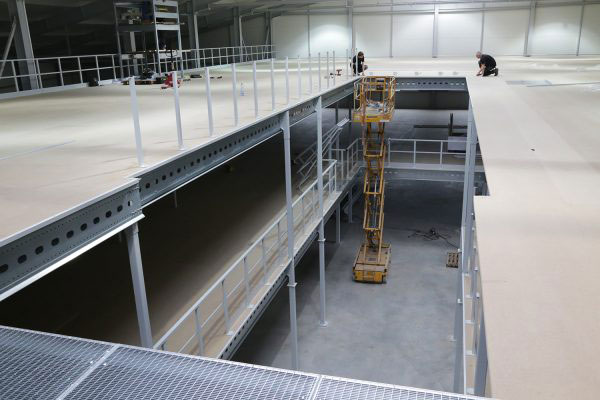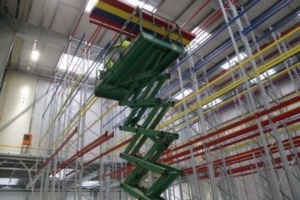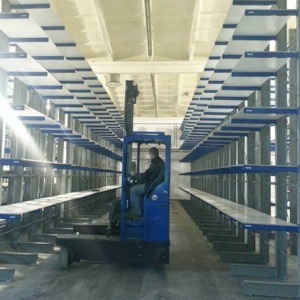Warehouse Operation Management – Rules
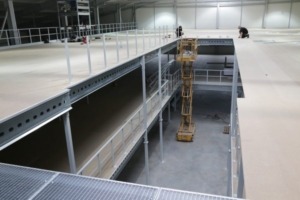 Pursuant to the Regulation the Minister of Labour and Social Policy as of 26 September 1997 on general provisions of occupational safety and health as amended, the employer is responsible for occupational health and safety, in particular prevention of hazards related to provided work, work management, precautions, as well as provision of information and training for employees.
Pursuant to the Regulation the Minister of Labour and Social Policy as of 26 September 1997 on general provisions of occupational safety and health as amended, the employer is responsible for occupational health and safety, in particular prevention of hazards related to provided work, work management, precautions, as well as provision of information and training for employees.
Designation of spaces and principles regarding storage of materials.
- For any material or good purposed for storage it is required to:
- a) specify storage spaces as well as manner and allowed storage height for any type of goods;
- b) ensure that mass of stored goods was within load range permitted for storage system or equipment (racking, platforms etc..);
- c) ensure that mass of stored goods, including mass of storage system and devices, including handling and transport systems, was within load range permitted for floor topping and structural floors where storage follows;
- a) Racking shall offer robust and stable construction and be provided with protection against collapse.
- b) Aisles width shall be appropriate to used equipment and shall enable safety during equipment maneuvering and operation.
- a) Stacking of goods on racking and handling thereof shall not result in hazard for employees.
- b) Any fragile goods, substances and preparations classified hazardous, as well as materials of higher mass shall be stored on the lowest shelving.
- a) Objects whose size, shape and mass require individual manner for storage, shall be stacked in manner ensuring stability, considering their centre of gravity, to prevent tipping over or fall.
- a) In case of piled materials storage it is required to ensure:
– stability of piles by storage up to height limit appropriate for type of materials (size, mass, shape) and packaging durability;
– stack by interlocking layers to keep them secure;
– that centre of gravity of stored piled goods was within the pile;
– a distance between piles that enables safety during handling of materials.
- b) During removing any goods from the stack, start from the top row first. Never remove any goods placed in the middle of pile.
6.1 In case bulk materials storage, ensure:
– Storage spaces that will enable free access and aisles around a pile in case of bulk materials disposing at natural angle;
– Sufficient strength of barriers appropriate to force generated by stored bulky goods;
– Appropriate fencing off, if required to protect adjacent spaces, workplaces according to technical possibilities– for areas where handling follows and handling equipment, with provided connection to extraction systems, if dusting follows;
– Work procedures ensuring safety, in particular in case of manually handled and carried materials.

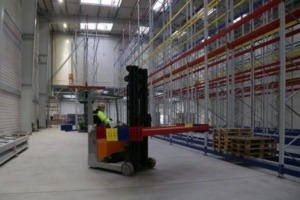 During storage of bulky materials that cause risk of dusting, tight fencing off is required min. 0.5m high over the stored goods.
During storage of bulky materials that cause risk of dusting, tight fencing off is required min. 0.5m high over the stored goods.
- 2. Transport of goods referred to in clause 1, may be provided with special transport means or in closed containers.
- During storage of goods that pose risk of self-ignition, always appropriate means of protection shall be provided, in particular with reference to storage height, provision of ventilation and shifting heaps or piles on regular basis.
- Storage is not allowed directly under overhead power lines or at the distance (counting from the location of end cables) smaller than:
1) 2m – away from low voltage line;
2) 5m – away from high voltage line up to 15kV;
3) 10m – away from high voltage line up to 30kV;
4) 15m –away from high voltage line over 30kV.
Circulating spaces for manual or mechanical moving of materials.
Pursuant to § 4 section 2 of the above Regulation on general provisions of occupational safety and health, of the following wording: transition should have dimensions appropriate to the number of potential users and the type and size of used equipment and moving cargo. The minimum dimensions are laid down in the Polish Standards.
Transition between machines and other devices or walls intended only to support these devices should have a width of at least 0.75 m. If the crossing is done bi-directional traffic, their width should be at least 1m.
PN-M-78010:1968 Standard on intra-factory transportation – Roads and door openings – Guidelines regarding design laid down the guidelines regarding warehouse building circulating areas designing. For motorized vehicles in one-direction traffic (without pedestrian traffic and other vehicles) minimum width of road at straight section shall be
B = a + 60cm
Where: a means width of transport mean, alternately width of load, if load width is over the truck.
Road width B shall not be below 120cm.
If pedestrian traffic is possible at the same time, B width shall be at least:
B = a + 100cm
In case of warehouse with bi-directional traffic, road width for fork lift truck shall be minimum (excluding pedestrian traffic):
B = 2a + 90cm
and in case of pedestrian traffic and other vehicles road width shall be:
B = 2a + 200cm
Pursuant to PN-EN 349+A1:2012 Standard on Safety of machinery- Minimum gaps to avoid crushing of parts of the human body a safety gap between the truck and racking shall be minimum 50cm. It is a gap that ensures safety for humans (in case of any human staying within aisles).
Pursuant to § 66 of the Regulation the Minister of Labour and Social Policy as of 26 September 1997 on general provisions of occupational safety and health as amended, the employer is obliged to:
- Establish the rules regarding traffic code applicable for intra-company circulation, consistent with the provisions of traffic code.
- The rules of traffic code referred to in 1 clause, maximum speed limit shall be established for transport means, intra-company circulation and company spaces, appropriate to road width, traffic, visibility etc..
- Roads shall be provided with road signs consisted with the applicable traffic code.
- Pursuant to the Regulation of the Minister of Economy on occupational safety during motor-driven trucks operation, the employer is obliged to specify speed limit for truck operation at particular road sections, taking into account traffic, nature of cargo, road width and condition, as well as visibility.
- When driving the road purposed for truck and provided with barriers separating from pedestrian walkway, the speed limit is 12 km/h, if distance is maintained from the nearest truck corresponding to ca. four times of truck length.
- Jeśli jest to droga oddzielona od drogi dla pieszych za pomocą linii na powierzchni drogi, to dopuszczalna prędkość maksymalna wynosi 5 km/h. 5 km/h jest normalną prędkością z jaką porusza się osoba piesza. Jeśli na drogę wtargnie pieszy, to niezależnie od odległości od wózka miejsca wtargnięcia, kierowca powinien wózek zatrzymać do czasu opuszczenia drogi przez pieszego.
The above guidelines applicable in many American states are based on guidelines from ASSE (The American Society of Safety Engineers).
Prepared by:
Tomasz Leliński
HSE Chief Specialist

